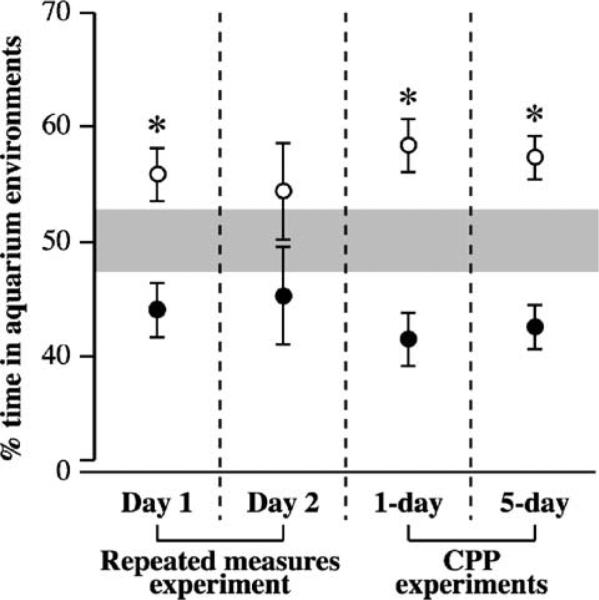Fig. 4.
In three independent experiments, O. rusticus exhibited a population-level preference for the uniform compartments of the conditioning aquarium. Based on a null hypothesis that crayfish would spend equal amounts of time in each of two environments (i.e., μ = 50.0%), two-tailed t-test statistics revealed significant deviations from ‘50/50’ spatial distributions in 3 out of 4 analyses of the natural spatial patterns of crayfish in the test aquarium (*, P < 0.05). Reported are the times (mean ± S.E.) spent in the uniform (open circles) and striped (closed circles) environments by groups of untreated crayfish from three separate experiments. The shaded region represents the 95% confidence interval for the expected time spent in each environment under the null hypothesis (viz., if crayfish spatial behavior was random, the average amount of time spent in each environment would fall within this region for 95 out of every 100 similarly sampled groups).

